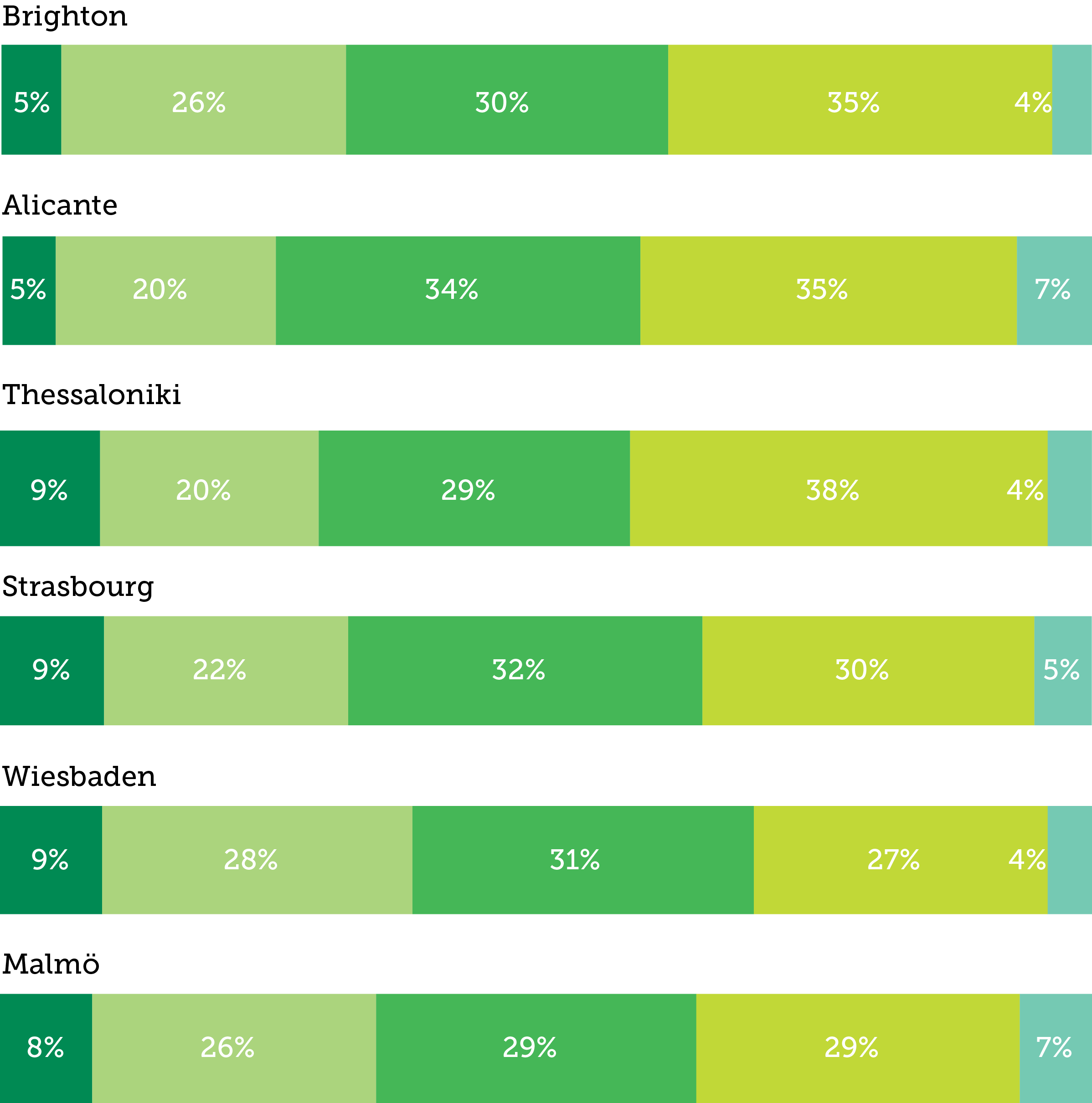
This factsheet shows how Brighton compares to the five most similar European cities in size and industrial structure. These are: Alicante (Spain), Thessaloniki (Greece), Strasbourg (France), Wiesbaden (Germany) and Malmö (Sweden)
Comparing cities in this way helps us to understand more about how well UK cities are competing on an international scale because it groups cities with similar industrial structures, rather than on their resulting economic performance. The factsheet also compares the relative strengths and weaknesses of Brighton to its European counterparts on variables such as skills, employment and productivity.
City group characteristics
This group of medium-sized cities have a comparatively small manufacturing base, but a large private services base.
Population
Industrial structure
Key
- Manufacturing, mining and utilities 2011
- Business services 2011
- Public services 2011
- Other private services 2011
- Other sectors 2011

Overall economic performance
Brighton does not perform well in its group across many of the indicators, but it does have the highest proportion of high skilled people, and it also performs relatively well on employment.